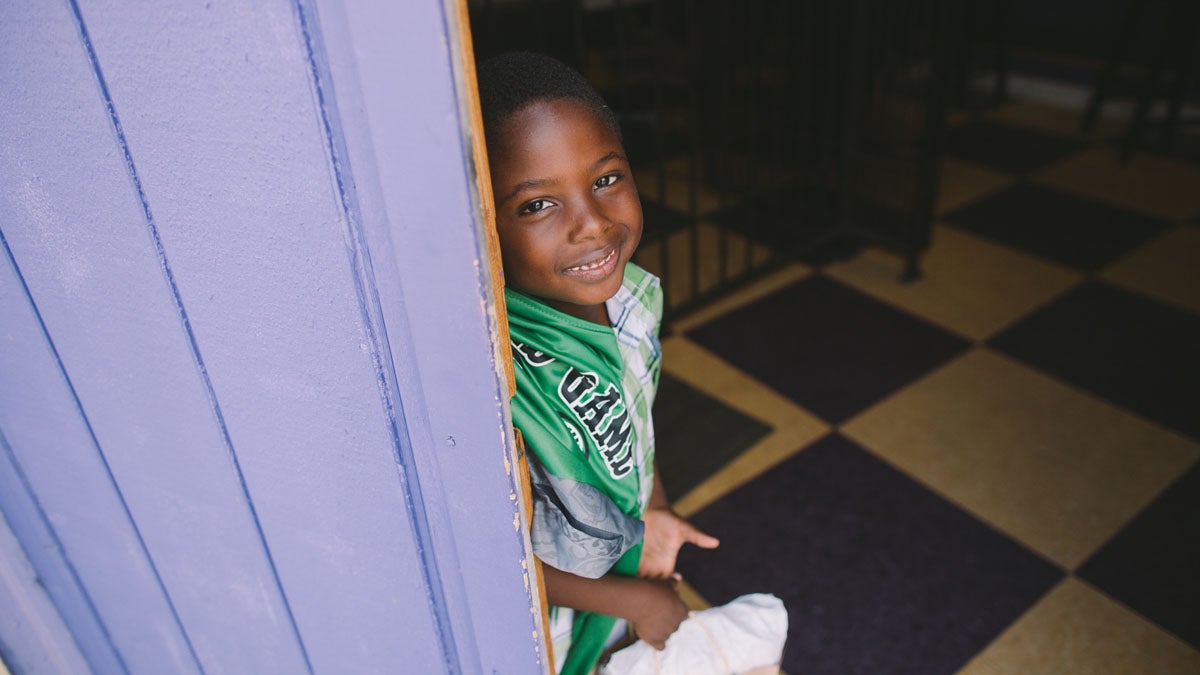Dismantling the stigma behind black mental health
Listen
Many people in the African American community go to church as an outlet for any mental illness. Here, a young boy attends New Revelations Church in Oakland. (Alyssa Kapnik Samuel)
According to the federal government’s Office of Minority Health, African-Americans are 20% more likely to experience serious mental health problems than the general population, but less likely to seek treatment.
Danielle Taylor is tall, in her late 20s, with a shaved head and a beanie cap propped to the side. Taylor is a violin instructor, she’s warming up, getting ready to teach her students. She smiles a lot and upon meeting her for the first time, my instinct is to give her a hug instead of a handshake. When she picks up her violin for an impromptu song, she shifts into a deep calm.
Everything feels serene in her Berkeley living room. Taylor is in a calm place, with her life and with her music. But it took her a while to get here.
“I grew up in Sobrante Park in East Oakland,” she tells me. “Definitely a poor, working-class neighborhood.” Sobrante Park is about 15 miles from where she lives now.
“Growing up in Sobrante, a lot of people have learned to navigate the world,” she says, “and be functional carrying a lot of weight that I think would be useful to talk about.”
This weight that Taylor’s talking about is something she’s felt since she was a young girl. She says her family was tight-knit, but her neighborhood was mostly low on income and high in crime. A scholarship sent her from her mostly black public school to a mostly white one.
Taylor remembers feeling completely isolated and praying for things to change. Then, as she got older, she experienced a trauma that she doesn’t like to talk about.
“What I grew up understanding… depression was something that white people experienced when they didn’t have enough whatever white people don’t get enough of,” she says. “And whenever you had a problem, it was because you had a lack of faith and praying, and going to church could fix everything.”
A persistent stigma
A 2011 report from the Centers for Disease Control found that even though African Americans are more likely to report major depression, only around seven percent actually sought treatment. That’s compared to 13.6 percent of the general population.
Dr. Loma Flowers, a clinical professor of psychology at the University of California in San Francisco, says much of this has to do with history. “I think in general, poor people have not been the allowed the luxury of mental illness,” she says. “They don’t have time, they don’t have the money.”
The stigma that kept Danielle Taylor from sharing her depression with her family doesn’t come out of nowhere.
“It’s a disease of the rich — you can afford to be depressed and not get out of bed,” says Flowers. Historically, she adds, for black people in America, “getting out of bed was not an option.”
Opening the church doors
Churches have long been the place where many African Americans find community and support, and some churches are recognizing that it’s not just faith that people can lean on when having a mental health crisis.
On a Sunday morning in Oakland, about 30 people gather at the temporary home of the New Revelation Community Church — it’s in the back room of the Omega House fraternity club, just past the bar.
Reverend Donna Allen’s sermon has the crowd clapping and shouting “Amen.”

Reverend preaches at New Revelation Community Church. (Alyssa Kapnik Samuel)
“Today, Jesus would be in the Black Lives Matter protest! Jesus would be screaming, ‘Take the confederate flag down!'” she tells the crowd.
Reverend Donna Allen’s preaching is political, but it doesn’t shy away from the personal — things like mental health. She tries hard to disassociate from the stigmas.
“I think it helps, especially if I don’t have stigmas and I don’t have issues with someone having a mental health condition,” she says. “That next step is connecting them with resources, and following up with them, encouraging them.”
Finding balance
Even with all of the training in the world, a helper from the church wasn’t going to be right for violinist Danielle Taylor.
“I wanted someone skilled to help me find different ways of looking at [my depression],” she says. “Is there a pattern? I want to know why and I can’t get that in a prayer.” So, she began looking for therapists. She reached out to the parents of her violin students to see if they could recommend therapists who took one-on-one clients and could meet her budget. It didn’t take long before she found someone who had a flexible payment plan.
Today, Taylor says she’s in a good place. She’s found some balance between the trauma that plagued her for years and an outlet that gives her the space to work it out. But there are still some things that she holds back on. Taylor hasn’t told her entire family that she’s in therapy.
“I don’t feel the need to tell my older family members,” she says. “I think that they would have some criticism. I don’t think it’d be whole-hearted support.”
So, for now when it comes to looking inward, Taylor confides in the person who she feels can help her most: her therapist.
This report was produced for the California Health Journalism Fellowship, a program of the USC Annenberg School for Communication and Journalism.
This post has been updated 10/12/15
WHYY is your source for fact-based, in-depth journalism and information. As a nonprofit organization, we rely on financial support from readers like you. Please give today.



